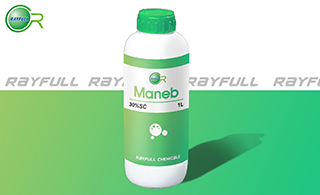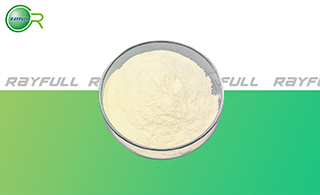Maneb
    ҙъЙӯГМ ҙъЙӯГМ
Introduction: Maneb is used in the control of early and late blights on potatoes and tomatoes and many other diseases of fruits, vegetables and field crops and ornamentals. Maneb controls a wider range of diseases than any other fungicide. It is available as granular, wettable powder, flowable concentrate, and ready-to-use formulations. Maneb is one of the chemicals of a class called the ethylene- bisdithiocarbamates ('EBDCs') that are noted for their instability in the environment. The application of heat can break these chemicals down into a number of metabolites. In addition to natural environmental processes that break down EBDCs, cooking of vegetables that are contaminated with these fungicides can also change them into different metabolites. Ethylenethiourea, an EBDC metabolite that is considered to be cancer-producing, is formed when maneb-treated vegetables are cooked.
Common name: Maneb
Another name: Rhodianebe; Manebgan; Manesan; Trimangol; Manex; etc.
Chemical name: manganese ethylenebis(dithiocarbamate) (polymeric)
Empirical formula: C4H6MnN2S4
Structural formula:

Mol. Weight: 265.30 g/mol
CAS No.: 12427-38-2
Specifications
Leading Maneb supplier
Maneb 90% TC
Maneb 80% WP
Maneb 30% SC
Packing:
BULK PACKING
Powder: 25kg/Bag, 25kg/Drum, 50kg/Drum etc.
Liquid: 200L/Drum, 20L/Drum, 10L/Drum etc.
SMALL PACKING
Powder: 1kg/Alu bag, 500g/Alu bag, 200g/Alu bag, 100g/Alu bag, 50g/Alu bag, 15g/Alu bag etc.
Liquid: 5L/Drum, 1L/Bottle, 500ml/Bottle, 250ml/Bottle, 100ml/Bottle, 50ml/Bottle etc.
Customerized packing label
Maneb FAO standard
Professional registration
HAZARDS IDENTIFICATION
Hazard statement(s)
H252: Self-heating in large quantities; may catch fire.
H261: In contact with water releases flammable gas.
H316: Causes mild skin irritation.
H317: May cause an allergic skin reaction.
H319: Causes serious eye irritation.
H333: May be harmful if inhaled.
H373: Causes damage to organs through prolonged or repeated exposure.
H400: Very toxic to aquatic life.
H410: Very toxic to aquatic life with long lasting effects.
Precautionary statement(s)
P231+P232: Handle under inert gas/... Protect from moisture.
P235+P410: Keep cool. Protect from sunlight.
P264: Wash ... thoroughly after handling.
P273: Avoid release to the environment.
P280: Wear protective gloves/protective clothing/eye protection/face protection.
P302+P352: IF ON SKIN: wash with plenty of water.
P304+P312: IF INHALED: Call a POISON CENTER/doctor/... if you feel unwell.
P304+P340: IF INHALED: Remove person to fresh air and keep comfortable for breathing.
P305+P351+P338: IF IN EYES: Rinse cautiously with water for several minutes. Remove contact lenses if present and easy to do - continue rinsing.
P312: Call a POISON CENTER or doctor/... if you feel unwell.
P321: Specific treatment (see ... on this label).
P333+P313: IF SKIN irritation or rash occurs: Get medical advice/attention.
P363: Wash contaminated clothing before reuse.
P391: Collect spillage.
P501: Dispose of contents/container to an approved waste disposal plant.
Supplemental Hazard Statements: none.
MAMMALIAN TOXICOLOGY
Acute toxicity: 1) Acute oral LD50 for rats is >5000 mg/kg. 2) Acute dermal LD50 for rats is >2000 mg/kg. 3) Acute inhalation toxicity LC50 (4 h) for rats is 5.34 mg/L. 4) Skin irritation: Non-irritating to skin (rabbits). 5) Eye irritation: Moderately irritating to eyes (rabbits). 6) Skin sensitization for guinea pig: Not a sensitizer.
NOEL: (2 y) for rats is 20 mg/kg/day; (1 y) for dogs is 6.4 mg/kg/day. Other Not carcinogenic. Not teratogenic.
ADI (JMPR) 0-0.03 mg/kg b.w. [1993]
Classification:
WHO Classification: U (Unlikely to present an acute hazard)
EC Risk Classification: Reproduction risk category 3: R63; Xn - Harmful: R20, R43
Xi - Irritant: R36; N - Dangerous for the environment: R50, R53
US EPA Classification (formulation): IV (Caution - Not acutely toxic).
ECOTOXICOLOGY
Effect on birds: Acute oral LD50 for Mallard is >1467 mg/kg. Effect on fish: Acute LC50 (96 h) for Rainbow trout is 0.20 mg/l. Effects on aquatic invertebrates: Acute EC50 (48 h) for Daphnia magna is 0.0021 mg/l. Effects on algae: Acute 72 hour EC50 for Pseudokirchneriella subcapitata is 0.007 mg/l. Effects on bees: contact acute 48 hour LD50 is >100 ҰМg/bee, oral acute 48 hour LD50 is >89.5 ҰМg/bee. Effects on earthworms: Acute 14 day LC50 is 840 mg/kg.
ENVIRONMENTAL FATE
EHC 78 (WHO, 1988; general review of dithiocarbamates). Animals In rats, metabolites included ethylenediamine, ethylenebis(thiuram) monosulfide and ethylenebis(thiourea). Plants In plants, the principal metabolite is ethylenethiourea, which rapidly undergoes further metabolism. Ethylenethiuram monosulfide, ethylenethiuram disulfide, and sulfur are also metabolites. Soil/Environment Rapidly degraded in the environment by hydrolysis, oxidation, photolysis, and metabolism. Soil DT50 c. 25 d (loamy sand in dark, aerobic conditions).
Usage: Maneb was introduced by Du Pont. It is a fungicide used to control a wide range of diseases including blight, leaf spot, rust, downy mildew and scab.
Application: Biochemistry Non-specific thiol reactant, inhibiting respiration. Mode of action Fungicide with protective action. Uses Control of many fungal diseases (e.g. blight, leaf spot, rust, downy mildew, scab, etc.) in field crops, fruit, nuts, vegetables, ornamentals, turf, etc. Particular uses include control of early and late blights of potatoes and tomatoes; Rhizoctonia solani and Streptomyces scabies on seed potatoes; leaf spot diseases on celery, beet and currants; rusts on cereals, roses, carnations, asparagus, beans, apples, plums and currants; downy mildews on hops, vines, onions, ornamentals and tobacco; Gloeodes pomigena, Glomerella cingulata, Microthyriella rubi and Physalospora obtusa on apples; scab on apples and pears; sigatoka disease (Cercospora musae) on bananas; anthracnose of beans; tulip fire; needle cast in forestry; and many seed-borne diseases of cereals. Used for foliar application or as a seed treatment.
| 






